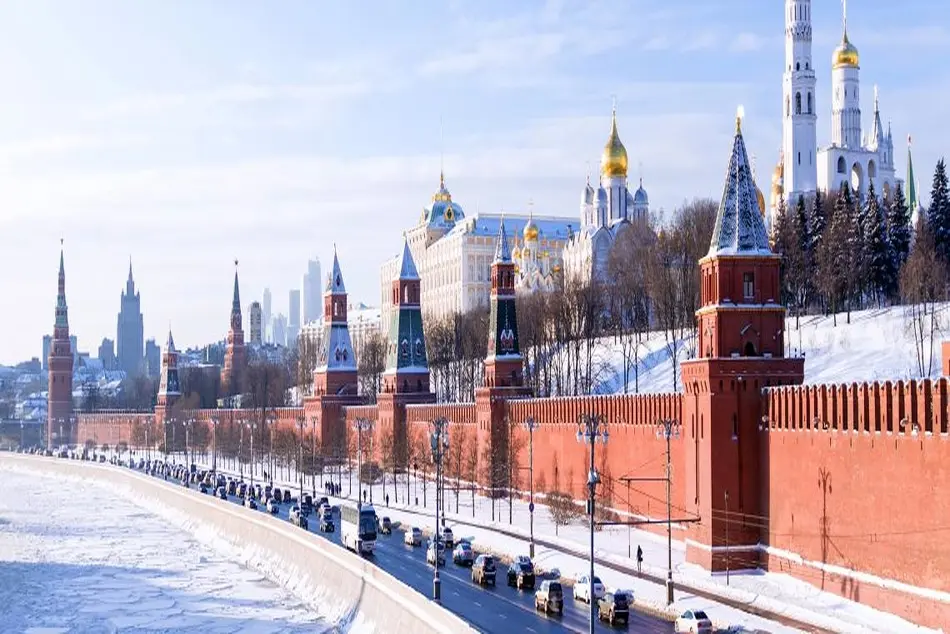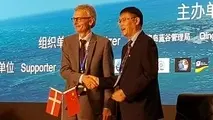Russia's Deputy Ministry of Transport on trade with China, new transport corridors and bridging East with West.

Nikolay Anatolevich Asaul, Deputy Minister of Transport of the Russian Federation, in conversation with IRU.
Personal insights from a leading government transport strategist, looking at TIR in the region, the impact of China's OBOR initiative, and Russia's role as a 'transcontinental economic bridge'.
As a member of the WTO and a party to the Eurasian Economic Union (EAEU) Agreement (signed in Astana on 29 May 2014) as well as the Customs Code of the EEU (to enter into force on 1 January 2018) what is Russia's role in supporting international trade and what are the major transport corridors with access to China that cross the territory of the Russian Federation?
The SCO Agreement signed on 12 September 2014 in Dushanbe by the Russian Federation, Kazakhstan, China, the Kyrgyz Republic, Tajikistan, and Uzbekistan; and the UNESCAP Asian Highway Network Agreement between Russia, China and Mongolia signed on 8 December 2016 in Moscow are currently the most significant trade agreements. Within the framework of the SCO Agreement, six new international road transport routes are planned from 2017 to 2020, with the following expected to open in the Russian Federation:
Barnaul – Veseloyarsk (Russian Federation) / Auyl (Republic of Kazakhstan) – Semipalatinsk – Bakhty (Republic of Kazakhstan) / Bakhty (People’s Republic of China) – Tacheng – Kuitun – Urumqi.
Saint Petersburg – Orenburg – Sagarchin (Russian Federation) / Zhaysan (Republic of Kazakhstan) – Alma-Ata – Korgas (Republic of Kazakhstan) / Khorgos (People’s Republic of China) – Urumqi – Lianyungang.
The UNESCAP Agreement is to facilitate unimpeded movement of goods along the Asian Highway Network. The Agreement covers the AH4 route and some AH3 route sections, including:
AH4. Novosibirsk – Barnaul – Gorno-Altaisk – Tashanta (Russian Federation) / Ulaanbaishint (Mongolia – Hovd – Yarantai (Mongolia) / Takeshkan (People’s Republic of China) Urumqi – Kashi – Honqiraf.
AH3. Ulan-Ude – Kyakhta (Russian Federation) / Altanbulag (Mongolia) – Darkhan – Ulaanbaatar – Saynshand – Zamin-Uud (Mongolia) / Erenhot (People’s Republic of China) – Outer Beijing – Tianjin.
There are approximately 100,000 commercial companies and 200,000 self-employed entrepreneurs involved in road transport operations in Russia. Can you give an overview of the current situation with international transport to and from China? What are the main challenges that Russian transport operators face?
International road transport operations between Russia and China are regulated by the bilateral agreement on International Road Transport of 18 December 1992. Transport operations are carried out under permits (quotas) and via designated routes. Routes and quotas for freight and passenger transport operations are regularly reviewed and agreed upon.
It should be noted that Russian-Chinese cooperation in the field of road transport has been developing year on year – despite problems in earlier years. Along with the high level annual meetings, business ties are being actively developed between authorities, road carriers and their associations in the neighbouring regions of Russia and China.
In 2016 a new route for road transport operations from China through Kazakhstan opened for Russian carriers. The volume of goods transported by road between Russia and China subsequently increased by 22%.
The growth in absolute volumes of exports resulted in an increase in their relative share from 53.1% in 2015 to 60.4% in 2017. In the last two years, Russian exports exceeded imports from China for the first time.
In 2016, the share of Russian road transport operators on the market was about 81% and the volume of cargo transported by them increased by 29%. Almost all of this growth is due to Russian exports. During the first half of 2017 the growth trend of bilateral road transport of cargo has continued. In general, the volumes increased by 13.7%.
In your opinion, how will the implementation of China’s Belt and Road initiative impact mutual trade and international road transport?
Currently, one of the most discussed initiatives related to the creation of a future Eurasian space is the ‘One Belt, One Road’ (OBOR) concept. A large-scale forum dedicated to the initiative was recently held in Beijing. The concept draws on the ancient Silk Road, which stretched across Eurasia and connected the thriving hubs of that time, including those located in Russia and China.
In May 2015, Vladimir Putin and Xi Jinping signed a Joint Declaration on Integration of the Eurasian Economic Union (EAEU) and the Silk Road Economic Belt. In 2016 the EAEU Member States approved a list of priority issues for the integration of the EAEU with OBOR in terms of transport and infrastructure – which is seen as crucial to the implementation of the initiative. These include both well-known proposals, such as the construction of the Europe-Western China road corridor, as well as smaller projects.
“Russia therefore sees the future of the 'Greater Eurasian Space' not just as the establishment of new links between states and economies. Rather, it could change the political and economic landscape of the continent and become the basis of peace, stability, prosperity and a fundamentally new quality of life.”
Russia’s location at the crossroads of Europe and Asia means that within the context of the world market, it is a transcontinental economic bridge for providing trade routes between the European, Asian-Pacific and South-Asian economic systems. Due to the agreements between the EAEU and Asian countries and the European Union, there is only one customs area, which greatly accelerates and simplifies the movement of goods.
Last year China acceded to the TIR Convention. Russian and Chinese parties are in consultation to define border crossing points that will be open to TIR. In this respect, what changes do you expect relating to transport efficiency?
While TIR is the only global transit system, it can also be successfully used at the regional level. TIR is now fully accepted in Russia and allows goods to be transported under customs guarantee with a single document along the whole route from Asia to Europe, which is highly relevant for the implementation of the OBOR initiative.
Although China has acceded to the TIR Convention, we await clarity on the timing of practical implementation for cargo transported by road to and from China, in particular for Russian transport operators.
Nevertheless, even if all the necessary procedures under the TIR Convention were implemented in China in the near future, there remain certain issues for road carriers seeking to operate freely between Russia and China due to the fact that routes and border crossing points are still strictly controlled by bilateral agreements between China and its adjacent countries. Therefore, border crossing procedures are not necessarily the main factors constraining trade via road transport in the region. While TIR would boost trade, other barriers related to transport need to be addressed in parallel.
At the UNESCAP Ministerial Transport Conference that took place in Moscow in December 2016 you signed an intergovernmental agreement on international road transport along the Asian Highway Network between China, Mongolia and Russia. Ahead of this milestone agreement, a pilot caravan in partnership with IRU was organised, that tested the operability of the route. How are preparations for the practical implementation of the Agreement progressing? What emerging opportunities do you associate with it coming into force? Is it the first time ever that Russian transport operators will be able to deliver goods to China’s hinterland?
In order to accelerate the practical implementation of the UNESCAP Agreement, a joint seminar involving the Russian, Chinese and Mongolian authorities was held in late August 2017 in Ulan-Ude. The outcome was positive. A new Russia – Mongolia – China economic corridor will allow cargo to pass from China to Russia through Mongolia in just four days. On the Russian side, this is especially important for Siberian and Far Eastern regions.
How would you assess the current state of infrastructure at existing and potential border crossing points? Is traffic capacity sufficient? Are they modernised, with scanning facilities and digital procedures?
Currently, the Russian-Chinese section of the state border has 12 border crossing points, of which 8 are fully operational. In general, the Russian-Chinese section of the state border is characterised by a constant increase in the number of passengers, vehicles and cargo passing through. These volumes are often not commensurate with capacity.
Based on the analysis of checkpoint capacity and the results of an evaluation conducted as part of a project on “Systematic Measures for the Development of International Cooperation and Export”, a list of priority border crossing points has been proposed for infrastructure improvement. However, despite the fact that the actual capacity of border crossing points at peak periods is exceeded, in general, these crossings are presently capable of providing facilities for the international transport of goods. Due to planned further active development and expansion of international road transport operations, however, all border crossing points will require updating, in order to avoid traffic and delays.



